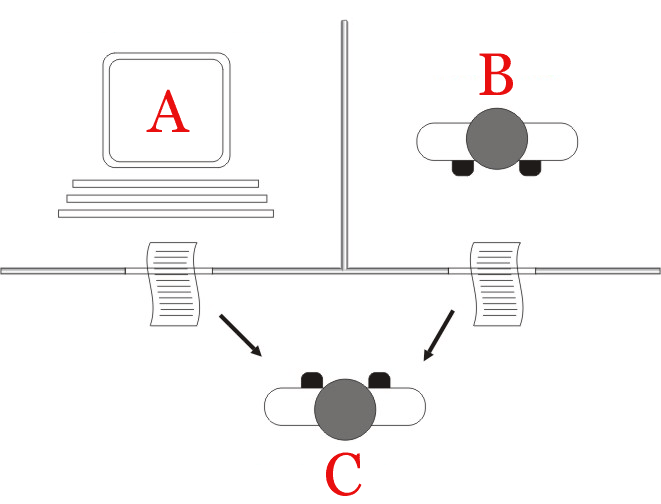“I propose to consider the question, ‘Can machines think?”
Alan Turing
When can we really call a computer intelligent? To answer this question, let’s learn more about the Turing Test – a rudimentary way to determine whether or not a machine qualifies as intelligent.

Wikipedia
The test is named after Alan Turing, a highly influential mathematician, and computer scientist. In his 1950 paper titled Computing Machinery and Intelligence, Turing proposed the following imitation game – A human judge (C) has a text conversation with unseen, and unknown interlocutors, and evaluates their responses. Most of these players will be human (B); one will be a chatbot (A), created with the sole purpose of tricking the judge into believing that it is a real human. To pass the test, that is, to qualify as “intelligent”, the machine’s responses should be indistinguishable from that of humans.

Wikipedia
Attempts at making machines that can fool humans have revealed some interesting challenges – for instance, it is difficult to construct programs that are good at telling jokes.
The Turing Test isn’t the perfect metric for artificial intelligence, and by its very nature, it encourages trickery. A recent attempt involved a program pretending to be a 13-year-old boy, for whom English wasn’t the first language, conveniently covering up any linguistic inaccuracies.
Nevertheless, the test gives us plenty to think about in terms of how we define intelligent behavior, and what we would want from truly intelligent, artificial agents.
See more:
1. The Turing Test (Stanford Encyclopedia of Philosophy)
2. The Turing Test (Computerphile)
- The Seven Bridges of Königsberg - August 17, 2020
- The Turing Test - August 6, 2020
- What is Machine Learning? - July 28, 2020
